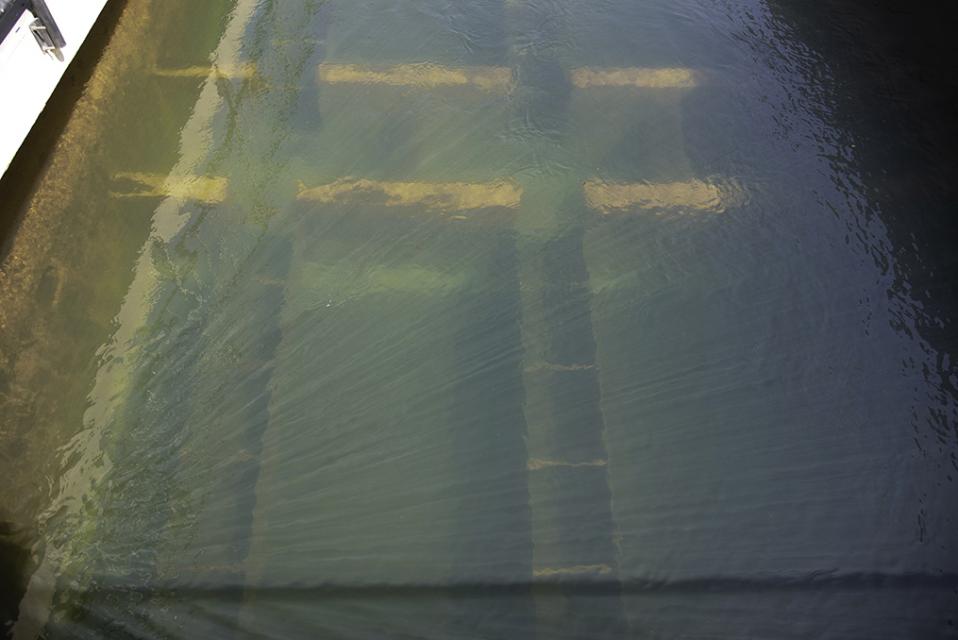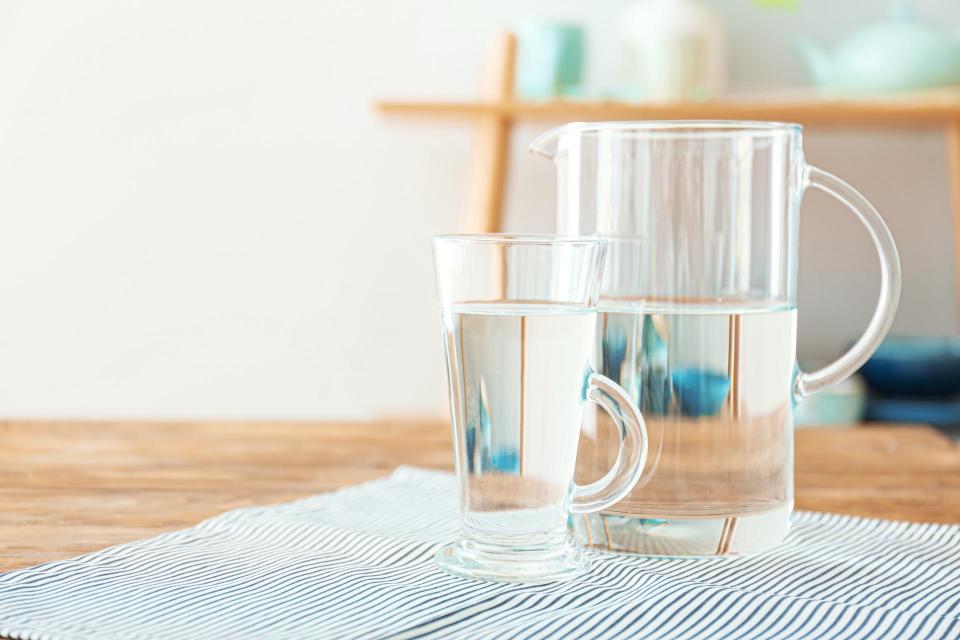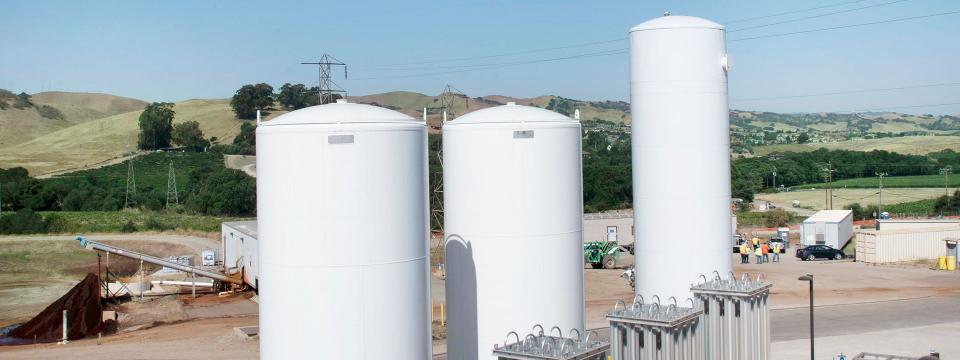Questions About My Water Quality
Questions about the Water Treatment Process
What is in my tap water?
Zone 7 Water Agency is regulated by the California State Water Resources Control Board Division of Drinking Water. We are committed to planning, designing, operating, and maintaining our water supply system to deliver high quality water to our customers. We take pride in the fact that our water standards meet all public health regulatory requirements set under the Safe Drinking Water Act. Zone 7 Water consistently performs better than most State and Federal water quality standards. Our in-house water quality policy sets internal targets to be no greater than 80 percent of the suitable State or Federal regulatory requirements.
Zone 7 applies an aggressive sampling and monitoring program to our water. This program is done every month, every quarter, as well as annually, to ensure it meets the State and Federal requirements. The results of our testing are published annually on our website in our Zone 7 Consumer Confidence Report. We also publish an annual report on our ground water quality which can be found under Sustainable Groundwater Management Program. Finally, you can visit our our Planning & Reports section to view all of our general annual reports.
Why are there contaminants in my tap water?
The contaminants found in our water (and in other municipal water supplies) are naturally occurring in the environment, human-made, as well as a by-product of the disinfection process used in water treatment. The amounts are well below the standards set under the Safe Drinking Water Act.
Zone 7 uses state-of-the-art treatment and monitoring technologies to provide the best water quality to its customers. Through comprehensive programs of source water protection, treatment and monitoring, Zone 7 meets or performs better than all regulatory requirements.
How is our water system removing contaminants?
Zone 7 has a Water Quality Policy that creates in-house targets for water quality that are stricter than the regulations set by the State of California. Our different treatment methods were developed to create an additional layer of safety and to address local concerns of taste, odor, and water hardness. This policy was developed jointly by Zone 7, our stakeholders and customers, and is reviewed on an biennial basis.
Zone 7’s two water treatment plants treat surface water. Our surface water treatment processes include ozonation, filtration, chlorination, coagulation/flocculation, and sedimentation. At our Mocho Groundwater Demineralization Plant, we use a reverse osmosis system. The reverse osmosis system, addresses water hardness, removes salts from the groundwater basin, and is a proven treatment method for removing PFAS chemicals. Groundwater has chloramine added during the treatment process at the wellhead to provide a disinfectant that matches surface water, so the water quality is the same throughout the distribution system.
How are you investing in better water treatment technology to improve water quality going forward?
Zone 7 is investing in both our water treatment plants to use ozone treatment. Ozonation is a proven technology that is commonly used by similar agencies. With the addition of ozone to our existing treatment method process, the quality of your drinking water will be improved.
Specifically, ozone treatment:
-
Is the most effective treatment for contaminants (like toxic compounds produced by blue-green algae, endocrine disruptors, and pharmaceuticals).
-
Is the most effective treatment for improving color, taste and odor.
-
Is more effective in killing viruses, bacteria, and microorganisms than chlorine as a disinfectant.
-
Reduces potentially harmful disinfection by-products.
-
Leaves less harmful residuals behind – ozone quickly decomposes into oxygen.
-
Works hand in hand with the filtration process, removes organic and inorganic material.
-
Strengthens other steps in the water treatment process.
How are you protecting our source water to keep pollution from getting into water in the first place?
Zone 7 regularly manages the groundwater basin in order to protect groundwater sources. The Sacramento-San Joaquin Delta is a source of drinking water for roughly two-thirds of the state of California. We are an active member in the state Department of Water Resources (DWR) Municipal Water Quality Investigation (MWQI) program. The DWR tracks the water quality of the Delta through the MWQI. Zone 7 focusses on four MWQI water quality monitoring stations upstream of both the surface water treatment plants. These stations report real time data on a number of water quality parameters before they reach the treatment plants. Advance notice of any significant changes in the source water allows Zone 7 to adjust the water treatment process accordingly. For more information on the MWQI please visit https://water.ca.gov/Programs/Environmental-Services/Water-Quality-Monitoring-And-Assessment.
Learn more about water treatment in the Wondrous World of Water.
Questions about Bottled Water vs Tap Water
Is bottled water better than tap water?
Tap water and bottled water are regulated differently, and the truth is, both are generally safe and healthy options. However bottled water costs close to 500 times more than tap water and the plastic bottles create serious environmental issues. There is no evidence to suggest bottled water is better than tap water when it comes to providing clean, safe drinking water.
Are there different regulations for bottled water and tap water?
The Federal and State Government requires rigid and frequent testing, and close monitoring of municipal water. The U.S. Environmental Protection Agency (EPA) and California State Water Board closely regulate all public water under the Safe Drinking Water Act. The U.S. Food and Drug Administration (FDA) oversees the bottled water industry with less demanding regulations. Bottled water is not necessarily cleaner, safer, or healthier than tap water. In many cases, bottled water is actually filtered tap water.
Why is tap water cheaper than bottled water?
A bottle of water could cost anywhere from $0.99 for a single use bottle up to $7.00 for a gallon of bottled water. Water from your tap only costs a fraction of a penny compared to bottled water. Buying bottled water is truly pouring money down the drain.
Which one is better for the environment?
Consider the environmental impacts that bottled water creates. In 2006, The Pacific Institute estimated that it took 17 million barrels of oil to make plastic bottles used by the United States of America. This did not include the energy in transporting the bottled water.
The process to bottle the water produces over 2.5 million tons of carbon dioxide. Most bottled water does come in recyclable plastic bottles, but only 13 percent of those bottles get recycled. Many plastic bottles end up in trash or our local streams and waterways. In 2005, 2 million tons of plastic water bottles ended up in landfills instead of being recycled.
What if I prefer the taste of bottled water?
All of the water that Zone 7 delivers to its customers meets regulatory standards for drinking. In most cases, the quality is much better than required. Zone 7 is taking steps to improve the taste of the water. There are also things that you can do as well that may help you enjoy the taste of your taste of your tap water more. These include:
- Keep your tap water cooling in the refrigerator
- Add lemon, lime, cucumber or mint leaves to tap water
- Purchase a low-cost carbon filter
The National Resources Defense Council (NRDC) cited that some studies suggest harmful chemicals in plastic bottles can seep into the water over time and has asked for further research into this issue. Buying and using a reusable bottle not only will save money, but will also help the environment.
Learn more about how we are using ozone to improve taste of water at our Del Valle Water Treatment Plant.



